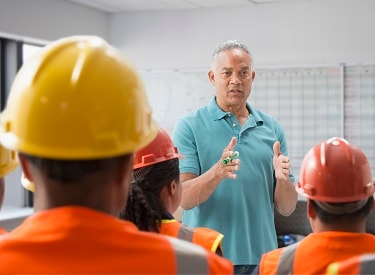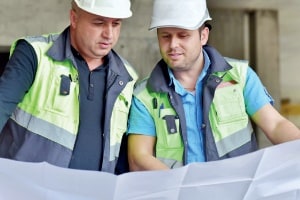
Webinars
Watch webinars from our experts on topics including facility management, prioritizing people, mental health and the value of strategic digitalization for health, safety and well-being.
Prioritizing your workforce and stakeholders
Prioritizing your workforce and stakeholders




Introducing ISO 45003 - psychological health and safety at work
Health, safety and well-being underpins all activity in the built environment industry and is one of the main issues for teams at every level to address.
Best practice health, safety and well-being programmes, implemented from the top down, drive successful and sustainable organizations and boost economies globally by unlocking new commercial opportunities. They help an organization to steer their activities to manage compliance and meet international standards and contractual obligations.
Safeguarding workers’ well-being, including the increasingly important area of mental health, helps maintain business continuity by curtailing staff shortages and avoiding project delays. It also builds trust among the workforce and supply chain which in turn enhances organizational resilience and agility. This secures responsible businesses a place in the future of construction, and protects their status as a desirable place to work.
Health and safety has always been a concern within the built environment, with physical risks to workers established as a particular challenge. Construction is also a volatile environment in which any parts of a constantly shifting structure can collapse around workers without notice.
A common cause of injury is workers falling, from both height and ground-level, where large obstacles - particularly ones on the move – create many hazards. Heavy lifting and manual handling of plant and materials can take its toll physically and presents challenges with an ageing workforce. Short and long-term ill-health issues can arise from noise and vibrations, and exposure to dust, especially where dust extraction is poor and the correct personal protective equipment (PPE) isn't provided.
Technology is playing its part in reducing skills shortages by attracting and retaining workers in the sector. It also has the potential to improve the management of health and safety, as strategic digitalization enables near-instant measuring and monitoring of hazards, as well as digital tools such as BIM that further help reduce risks and accidents.
Social distancing of workers has also become an issue since the COVID-19 pandemic, highlighting established concerns about how the ways in which people move around workspaces affects their safety in the built environment.
As with many industries, the pandemic has pushed mental well-being in construction to the top of the agenda by creating uncertainty and instability, with existing work patterns disrupted and the established work/life balance called into question.
Together with diversity and inclusion, mental health has become a key area for organizations to focus on to address staff shortages by nurturing a loyal and supported workforce that will contribute to their long-term survival. These people issues are addressed in BSI’s Prioritizing People Model© which sets out a best practice framework for workplace well-being that drives trust and fosters a culture of care.
There are five core elements of a successful plan for health and safety management, all of which apply in the built environment:
Our specialist teams have direct knowledge of the management of health, safety and well-being within construction and the built environment. Whether your organization has a health, safety and well-being programme in place that needs improving or has just started on the path to building one, we will help you to understand and apply health and safety solutions to your organization for safer and healthier working conditions which protect stakeholders, enabling you to reduce operational risks and minimize hazards.

Find out more about the changes and the past and future of the PPE Directive.

Protecting workers, customers and organizations

Read more about sustainability

A framework designed to raise standards of competence across the built environment